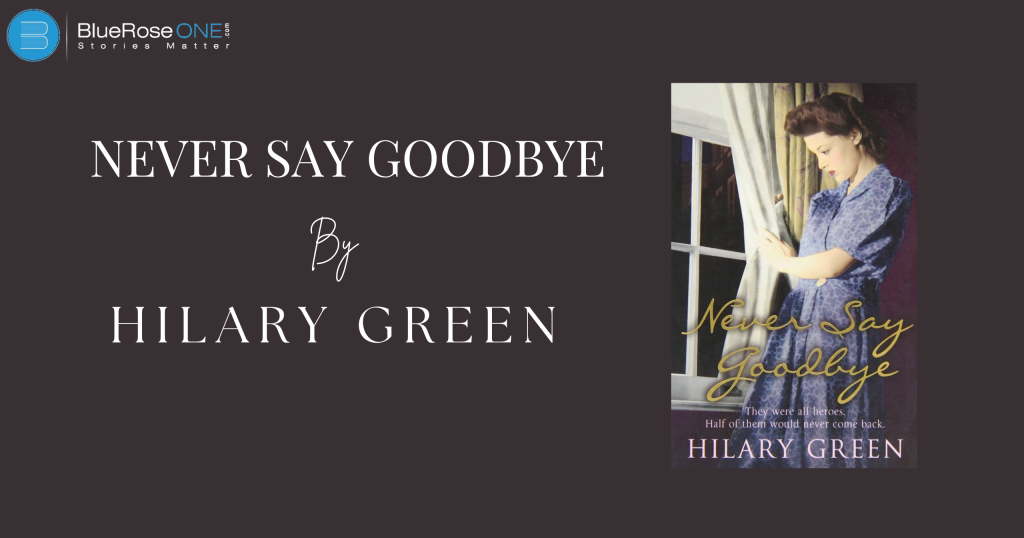
Never Say Goodbye a Book by Hilary Green
Books that encapsulate the spirit of love, battle, and human perseverance tend to stick with readers long after they’ve finished reading them. One such book is Hilary Green‘s Never Say Goodbye. This book skillfully combines historical events with compelling personal difficulties to create an emotional story set against the backdrop of World War II. The ideas, characters, and writing style that make this book an engaging read for fans of historical fiction will all be covered in this review. About the Author British novelist Hilary Green is renowned for her ability to write historical fiction that appeals to readers. She has a background in education and theater, which gives her stories a certain depth. War, sacrifice, and resiliency are common themes in Green’s writing, and Never Say Goodbye is no different. Synopsis of Never Say Goodbye Set during World War II, Never Say Goodbye follows the lives of several young men and women whose destinies are intertwined by the war. The novel primarily revolves around two protagonists, Frankie and Juliet, who are drawn together by the shared experience of conflict. Frankie, an ambitious young man, joins the British Army to serve his country, while Juliet, determined to do her part, becomes involved in the Special Operations Executive (SOE).Their love story unfolds amid the chaos of war, making their bond both passionate and heartbreaking. The novel also features a cast of interesting secondary characters that bring complexity to the plot by illustrating the various roles that people performed during the war. As they face the horrors of war, readers witness their bravery, anguish, and determination to live. You may also read: Too Good To be True a Book By Prajakta Koli Themes Explored in Never Say Goodbye 1. Love and Sacrifice One of Never Say Goodbye’s key themes is the strength of love in the face of adversity. Separation, responsibility, and the horrors of war all put Frankie and Juliet’s love under strain. Their story exemplifies the sacrifices people make for their country and loved ones. 2. Courage and Resilience The novel showcases the resilience of those who fought in World War II, particularly the members of the SOE. Juliet’s role in espionage is depicted with remarkable realism, portraying the dangers faced by those who risked everything for their country. 3. Friendship and Camaraderie Throughout the novel, friendships form between soldiers, resistance fighters, and spies. These relationships provide moments of warmth and humanity amid the bleakness of war. 4. The Cost of War Hilary Green does not romanticize war but instead portrays its brutal realities. The novel explores the physical and emotional toll on soldiers and civilians alike, emphasizing the heavy price of freedom. Character Analysis Frankie Frankie is a powerful and driven protagonist who aspires to serve his country. His transformation from an excited young recruit to a battle-hardened soldier is captivating and genuinely moving. His feelings for Juliet lend emotional weight to his struggles. Juliet Juliet is a brave and independent lady who plays an important role in the war effort. Her engagement with the SOE highlights the often-overlooked role of women in wartime espionage. Her resilience and brilliance make her a memorable character. Supporting Characters Green introduces a number of supporting characters, each with their own set of challenges and storylines. These people bring depth to the story and offer diverse viewpoints on the fight. You may also like: FootNote vs. Endnote: What’s the Difference and When to Use Each? Writing Style and Narrative Structure Hilary Green’s writing is deep and thoroughly researched, bringing readers to the war-torn landscapes of the 1940s. The novel’s rhythm is well-balanced, fluidly combining action, romance, and historical knowledge. The alternating views of Frankie and Juliet allow readers to experience both the battlefield and the espionage world, resulting in an engaging storytelling method. The conversation is authentic, and the descriptions are vivid, bringing the drama to life. Why You Should Read Never Say Goodbye Historical Accuracy – The novel provides a detailed and accurate portrayal of World War II, particularly the role of the SOE. Emotional Depth – The relationships and personal struggles of the characters make for a deeply moving read. Strong Female Protagonist – Juliet’s role in the war effort highlights the contributions of women in history. Engaging Storytelling – Green’s writing style keeps readers invested from start to finish. Final Thoughts Never Say Goodbye, by Hilary Green, is a brilliantly written historical story that portrays the spirit of love, battle, and resilience. Fans of historical fiction will appreciate its well-developed characters, exciting plot, and historical accuracy. Whether you enjoy World War II stories, love sagas, or tales of valor, this work will not disappoint. Have you read “Never Say Goodbye”? Please share your ideas in the comments below!
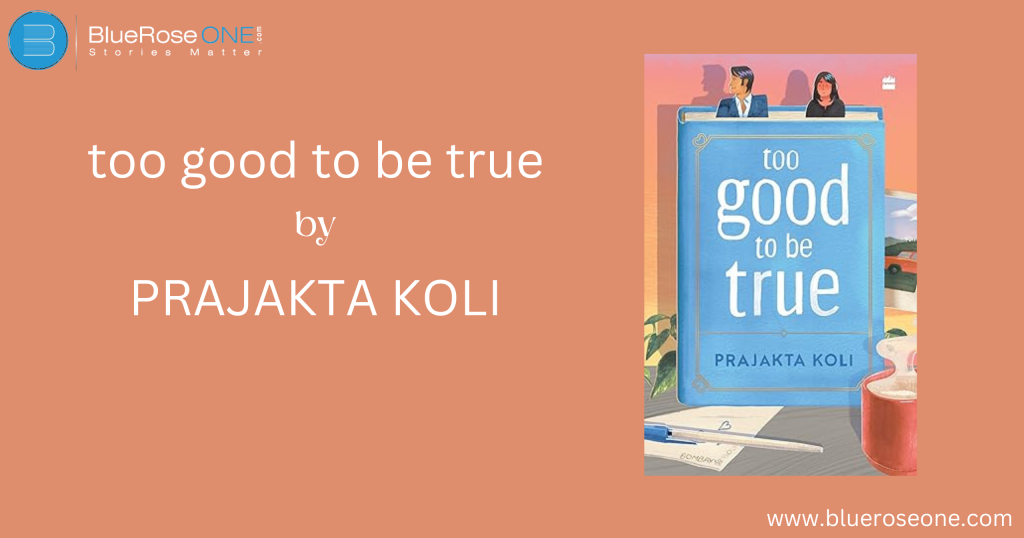
Too Good To Be True a Book by Prajakta Koli
Prajakta Koli, best known for her internet alias ‘MostlySane’, has made her literary debut with “Too Good to Be True“. This contemporary romance quickly piqued readers’ interest, selling 150,000 copies within a month of its release and ranking first on Nielsen India BookScan’s fiction bestseller list. Plot Overview – Too Good To Be True Prajakta Koli, best known for her internet alias ‘MostlySane’, has made her literary debut with “Too Good to Be True”. This contemporary romance quickly piqued readers’ interest, selling 150,000 copies within a month of its release and ranking first on Nielsen India BookScan’s fiction bestseller list. Character Development Avani emerges as a relatable protagonist, capturing young adults’ concerns and aspirations. Her mental monologues, frequently tinged with wit, reveal her worries and wants. Aman’s persona, while portrayed as the archetypal romantic hero, lacks depth in several aspects. While his feelings for Avani are clear, a more in-depth look at his origins and reasons would have enhanced the story. The supporting characters, particularly Avani’s close pals, bring life to the plot, providing both comic relief and wise advise. Writing Style Koli’s writing is conversational and engaging, which reflects her experience as a content provider. The narrative alternates between Avani’s and Aman’s points of view, allowing readers to obtain a thorough knowledge of their emotions. However, several critics point out that the two characters’ voices periodically merge, making it difficult to discern between them without explicit markings. Furthermore, while the repeated allusions to traditional romance cliches serve as a meta-commentary on the genre, they might grow tiresome over time. too good to be true “Too Good to Be True by Prajakta Koli is a heartwarming romance novel exploring love, self-doubt, and modern relationships with humor, relatable characters, and an engaging narrative.” Buy Now Critical Reception Critics’ reviews of the novel have been divided. While its economic success is apparent, several reviews believe the movie explores familiar ground without providing new perspectives. The Indian Express notes that the book “serves up a series of clichés, from its title to its pink-and-blue cover,” implying that it does not depart greatly from accepted romantic norms.In contrast, the Hindustan Times described it as “a love letter to love stories,” noting its beauty while highlighting areas where character delineation may be improved. Themes and Relatability At its foundation, “Too Good to Be True” examines the contrast between literary romance and real-life relationships. Avani’s preoccupation with romance books causes her to establish excessive expectations, leading her to doubt the validity of her feelings toward Aman. This internal conflict speaks to those who have struggled to reconcile romanticized conceptions of love with reality. The story also discusses mental health, emphasizing how prior events influence one’s perception of relationships and the significance of overcoming personal concerns. Conclusion “Too Good to Be True” is an impressive debut that highlights Prajakta Koli’s storytelling abilities. While it may not reinvent the romance genre, it does provide a fascinating and relevant story that will appeal to young adults negotiating the complexities of love and self-realization. Its financial success demonstrates its popularity with readers, indicating a bright start to Koli’s literary career. “If you want to read Too Good to Be True and buy it at the best price, check out the latest deals here!
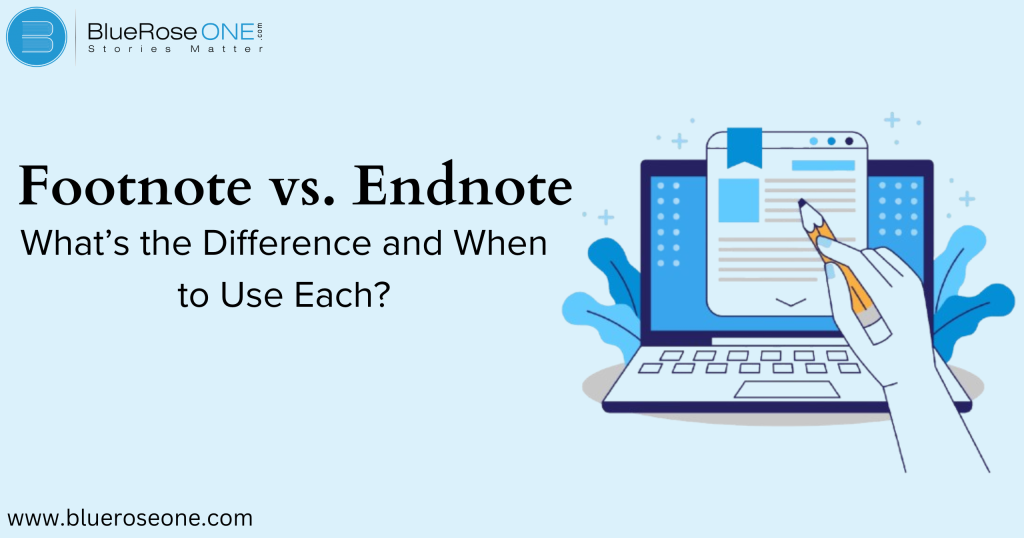
Footnote vs. Endnote: What’s the Difference and When to Use Each?
When writing academic papers, books, or research materials, appropriate citation is essential. Footnotes and endnotes are useful tools for adding more information, identifying sources, and assuring clarity. But what’s the difference between them, and when should you utilize which? This essay will explain the fundamental distinctions, benefits, and best practices for using footnotes and endnotes effectively. Understanding Footnotes Definition of Footnotes Footnotes are references or additional information that appear at the bottom of a page. They are identified with superscript numerals in the main text and correlate to numbered entries in the page’s footer. Purpose of Footnotes Footnotes serve several purposes, including: Providing citations for sources used in the text Offering additional context or explanations Clarifying technical terms without interrupting the main narrative When to Use Footnotes Footnotes are particularly useful when: Immediate reference is necessary for reader comprehension The text requires frequent citations A document follows citation styles like Chicago (Notes and Bibliography format) Formatting and Placement of Footnotes Footnotes appear at the bottom of the same page where the reference is cited. They typically include: A superscript number in the text A corresponding entry at the bottom with full citation details Example: This theory was first proposed by Smith.¹ John Smith, History of Footnotes (New York: Academic Press, 2020), 45. You may also like: How to Get More Reviews in 2025: Proven Tips for Authors Understanding Endnotes Definition of Endnotes Endnotes are citations or additional notes placed at the end of a chapter or document. They function similarly to footnotes but are collected in one section instead of appearing on each page. Purpose of Endnotes Endnotes help by: Keeping pages uncluttered Providing detailed explanations in one place Organizing references systematically When to Use Endnotes Endnotes are ideal for: Longer academic papers and books Documents requiring a cleaner page layout Citation styles that favor consolidated references, like Chicago (Author-Date format) Formatting and Placement of Endnotes Endnotes appear in a separate section, usually before the bibliography. The citation process remains similar to footnotes: Superscript numbers in the main text A corresponding numbered list at the end Example: This hypothesis has been debated for decades.² John Doe, Endnotes Explained (London: Scholar Press, 2021), 78. You may also like: Top 10 Hugo Award-Winning Novels You Must Read Key Differences Between Footnotes and Endnotes Features Footnotes Endnotes Placement Bottom of the page End of the document or chapter Readability Easy to reference but can clutter pages Keeps pages clean but requires flipping back and forth Usage in Citation Styles Common in Chicago (Notes-Bibliography) and legal documents Preferred in APA, MLA, and Chicago (Author-Date) Advantages Immediate access to information Uncluttered layout for smoother reading Disadvantages Can make a page look crowded Readers must navigate to the end to check references When to Use Footnotes vs. Endnotes Academic Writing and Research Papers Footnotes and endnotes are used in academic writing and research papers to provide citations, explanations, and additional background without deviating from the main text. Footnotes display at the bottom of the page, making them perfect for brief explanations or commonly cited sources. Endnotes, which appear at the end of a chapter or document, are best suited for lengthy discussion or less crucial references. The choice is based on readability, discipline conventions, and the style guide required, such as Chicago, MLA, or APA. Business and Legal Documents Footnotes are frequently used in business and legal papers for instant reference, ensuring that citations, definitions, and explanations are easily accessible without breaking the flow of the content. Footnotes are often used in legal contracts, financial reports, and business filings to convey information about transparency and compliance. Endnotes, on the other hand, are appropriate for long documents such as white papers or legal briefs that require a neat arrangement. The decision between footnotes and endnotes is based on readability, document length, and audience demands. Books and Publications Footnotes and endnotes are used differently in books and academic papers, depending on readability and style preferences. Footnotes, which appear at the bottom of a page, allow quick access to citations or explanations, making them perfect for scholarly publications and widely referenced literature. Endnotes, which are collected at the end of a chapter or book, contribute to a cleaner page layout, which is generally desired in literary works and substantial research publications where distractions are minimized. You may also read: List of Nobel Prize Winners in India (Updated) Best Practices for Using Footnotes and Endnotes 1. Maintain Consistency When utilizing footnotes and endnotes, it is critical to keep the formatting consistent. Choose a citation style (e.g., MLA, APA, or Chicago) and use it consistently throughout your document. Ensure that the numbering is sequential and that the positioning fits style rules. Maintain consistency in font size, indentation, and punctuation to improve readability. Inconsistent notes can mislead readers and undermine credibility. Maintaining a consistent approach results in a professional and polished presentation of your references. 2. Follow Citation Style Guides Different academic disciplines demand different citation styles, so it is critical to use the appropriate style guide when utilizing footnotes and endnotes. For example, the Chicago Manual of Style (CMS) is widely used in history and publishing, but the APA and MLA prefer in-text citations with little footnote use. Always follow the standards of your preferred style to guarantee proper formatting, citation sequence, and punctuation. Following citation norms increases credibility and maintains uniformity in scholarly and professional work. 3. Avoid Overuse While footnotes and endnotes are useful for referencing sources and providing information, utilizing them excessively can clutter your writing and disturb readability. Excessive footnotes may distract readers, and too many endnotes might make it difficult to understand references. Use them sparingly for necessary clarifications, citations, or further information. If a detail is important, consider incorporating it into the main text. Striking a balance ensures that your work is clear, professional, and easy to understand for your target audience. 4. Keep References Clear and Concise To ensure readability, use footnotes and endnotes with clear and succinct references. Avoid long explanations and instead include…
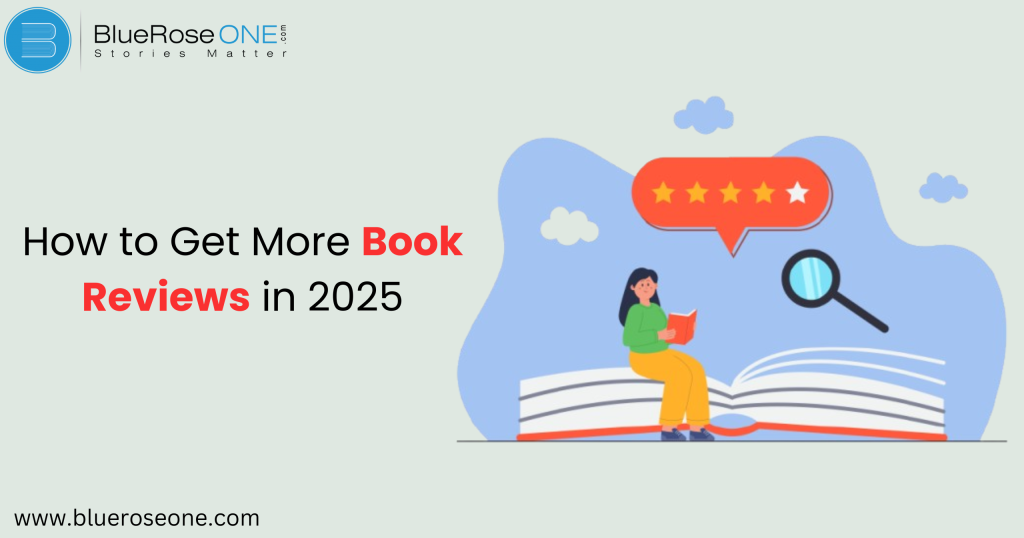
How to Get More Book Reviews in 2025: Proven Tips for Authors
Book reviews can have a significant impact on an author’s success. Whether you self-publish or traditionally publish, reviews serve as social evidence, influence purchasing decisions, and boost your book’s rating on platforms such as Amazon and Goodreads. However, getting reviews is not always straightforward, and with increased competition in the publishing sector, authors must devise clever techniques to entice more people to provide input. This tutorial will coach you through tried-and-true methods for increasing your book reviews in 2025. You may also like: Top 10 Hugo Award-Winning Novels You Must Read Understanding the Power of Reviews Social Proof and Reader Trust Social proof plays a crucial role in shaping reader trust, making book reviews an essential part of an author’s success. When potential readers see positive feedback from others, they are more likely to buy and read the book. Reviews provide validation, showcasing the book’s quality and credibility. In 2025, with the rise of social media and influencer recommendations, leveraging reader reviews can significantly boost an author’s visibility and book sales, strengthening audience engagement and trust. Algorithms and Visibility Book reviews are vital in increasing a book’s visibility on platforms such as Amazon, Goodreads, and Apple Books. Algorithms prefer books with increased involvement, so more reviews can boost ranks and discoverability. Positive reviews boost credibility, encouraging more readers to buy. Furthermore, reviews impact recommendation systems, allowing books to appear in personalized recommendations and bestselling lists. Consistently obtaining reviews can have a big impact on an author’s success in the highly competitive 2025 book industry. You may also read: Top 10 Hugo Award-Winning Novel You Must Read Preparing for More Reviews Before Launch Building an ARC (Advanced Reader Copy) Team Building an ARC (Advanced Reader Copy) team is an important step in obtaining reviews before your book is released. An ARC team is a group of eager readers who receive a free early copy in exchange for honest feedback. To form an effective team, invite active readers from your email list, social media, and book communities. Provide clear guidelines for where and when to post reviews to maximize impact on platforms such as Amazon and Goodreads. A strong ARC team increases credibility and visibility. Setting Up a Launch Strategy A great launch strategy is essential for getting early book reviews. Begin by creating your email list and connecting with possible reviewers, such as book bloggers, influencers, and ARC (Advanced Reader Copy) readers. Use platforms like NetGalley or StoryOrigin to distribute pre-release copies. Plan a social media campaign, plan promotional posts, and organize countdown events to generate buzz. A well-executed strategy ensures a steady flow of reviews, boosting visibility and credibility upon release. Encouraging Beta Readers to Leave Reviews Before you publish your work, engage beta readers and gently encourage them to provide honest reviews. Provide them with early copies and underline how their feedback will benefit future readers. Make the process easier by sharing direct links to review platforms and providing review prompts. Personalized follow-ups and thanks can boost participation. Beta readers are often the first to see your book, so their early feedback can help enhance credibility and visibility before the final publication. You may also read: List of Nobel Prize Winners in India (Updated) Leveraging Your Existing Audience Engaging Your Email List One of the most efficient techniques to increase book reviews is to engage your email list. Your subscribers are already interested in your work, so they make excellent candidates for early reviews. Send tailored emails with advanced reader copies (ARCs) or special material in exchange for honest feedback. Keep your audience involved by providing regular updates, behind-the-scenes insights, and calls to action, and encourage them to leave reviews on platforms such as Amazon and Goodreads to help your book gain popularity. Asking for Honest Reviews from Followers One of the most successful strategies to get book reviews is to directly ask your current readership for honest comments. Engage with your followers via email newsletters, social media, or author websites, and encourage them to leave reviews on sites such as Amazon and Goodreads. Be open about the role of reviews in increasing awareness and credibility. Consider gifting a free chapter, unique content, or simply thanking them for their support and honest feedback. Offering Incentives (Without Violating Guidelines) When offering incentives for book reviews, it is critical to adhere to ethical norms to avoid infringement on platforms such as Amazon. Instead of offering monetary or free items in return for positive ratings, think about ethical alternatives. For example, you can offer supplementary content to all readers, regardless of review status, such as exclusive short stories or behind-the-scenes insights. Hosting a giveaway in which reviews are not required can also increase interaction while adhering to platform standards. You may also read: Top 10 ELF Name Generators for Fantasy Writers Utilizing Online Book Review Platforms Goodreads Giveaways and Reviews Goodreads giveaways and reviews are effective strategies for authors trying to increase the visibility of their books. A Goodreads Giveaway can create excitement and inspire readers to submit reviews, improving exposure and trustworthiness. Because Goodreads has a big community of keen readers, positive reviews can have a substantial impact on potential customers. Engaging with reviewers and participating in discussions can boost an author’s visibility, making Goodreads a vital medium for obtaining more book reviews in 2025. Amazon Vine and Other Review Programs Amazon Vine is an invitation-only initiative that rewards trusted reviewers with free books in exchange for honest comments, assisting writers in obtaining reputable evaluations. Other programs, such as NetGalley and BookSirens, connect authors with readers who provide early feedback. These platforms increase visibility, credibility, and impact purchase decisions. By utilizing such services, authors may generate buzz and improve engagement, making them critical tools for obtaining more book reviews in 2025. NetGalley and Similar Services NetGalley is a popular service that connects authors and publishers with consumers, librarians, and professional reviewers to provide early input on books. Similar sites such as Edelweiss+, BookSirens, and Reedsy Discovery allow you to send advance reader copies (ARCs)…
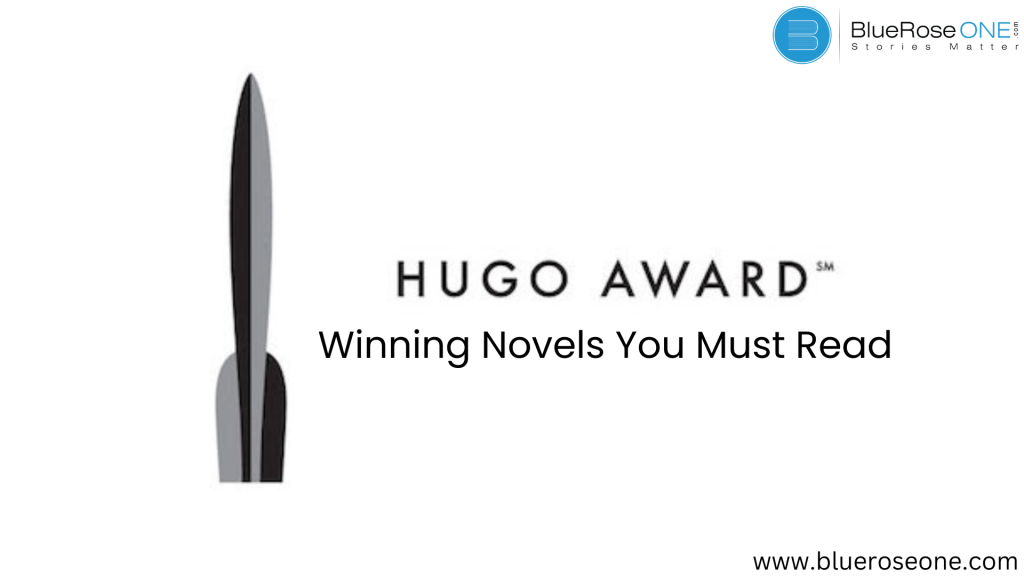
Top 10 Hugo Award-Winning Novels You Must Read
The Hugo Awards have been honoring the best in science fiction and fantasy since 1953. Winning a Hugo is a testament to quality, honoring groundbreaking narrative, imaginative world-building, and captivating themes. If you’re new to speculative fiction or want to extend your reading list, these ten Hugo Award-winning novels are must-reads. Top 10 Hugo Award-Winning Novels 1. Dune by Frank Herbert (1966) Dune by Frank Herbert (1966) is a classic of science fiction and a must-read for any aficionado of the genre. This epic novel, which won the Hugo Award in 1966, follows Paul Atreides as he navigates political intrigue, desert warfare, and mystical prophesy on Arrakis, an arid planet. Dune, with its vividly detailed world and themes of environment, power, and destiny, has influenced innumerable authors and is still regarded as one of the most acclaimed and thought-provoking science-fiction books in history. You may also like: List of Nobel Prize Winners in India (Updated) Dune – Hugo Award Novel 2. The Left Hand of Darkness by Ursula K. Le Guin (1970) Ursula K. Le Guin’s The Left Hand of Darkness (1970) is a revolutionary science fiction novel that delves into topics of gender, politics, and identity. Set on the cold planet Gethen, the plot follows ambassador Genly Ai as he navigates an extraterrestrial culture whose individuals can switch between male and female identities. The novel, which won both the Hugo and Nebula Awards, questions traditional concepts of gender and is still a must-read for readers of thought-provoking speculative fiction. You may also read: What is Typesetting?: A Beginner’s Guide to Perfect Page Layout The Left Hand of Darkness – Hugo Award Novel 3. The Dispossessed by Ursula K. Le Guin (1975) Ursula K. Le Guin’s The Dispossessed (1974) is a seminal science fiction novel that received the Hugo Award for Best Novel. A thought-provoking examination of anarchism and capitalism, it follows scientist Shevek as he goes from the anarchist moon Anarres to the capitalist planet Urras, hoping to bridge the ideological gap. Le Guin’s rich world-building and philosophical depth urge readers to reconsider society institutions, making The Dispossessed a must-read for aficionados of intellectual and political science fiction. You may also like: How to Write a Book Description That Grabs Readers The Dispossessed – Hugo Award Novel 4. Neuromancer by William Gibson (1985) William Gibson’s Neuromancer, a breakthrough cyberpunk novel, earned the Hugo Award in 1985. It follows Case, a failed hacker hired on a perilous assignment in a dystopian, tech-dominated future. Gibson’s visionary storytelling popularized notions like cyberspace and artificial intelligence, which influenced both literature and real-world technology. Neuromancer, a must-read for science fiction aficionados, combines noir-style intrigue with digital landscapes, making it a genre defining work and a cornerstone of speculative fiction. You may also like: A Complete List of Anuja Chauhan Books Neuromancer – Hugo Award Novel 5. Hyperion by Dan Simmons (1990) Dan Simmons’ Hyperion (1990) is a sci-fi classic that received the Hugo Award for Best Novel in 1990. Inspired by The Canterbury Tales, it follows seven travelers as they travel to the mysterious Time Tombs on the planet Hyperion and exchange their stories. The story, which blends space opera, literary allusions, and philosophical depth, delves into topics of fate, artificial intelligence, and human evolution. Its rich storytelling and innovative world-building make it an essential read for science fiction aficionados. You may also read: Top 10 ELF Name Generators for Fantasy Writers Hyperion – Hugo Award Novel 6. The Forever War by Joe Haldeman (1976) Joe Haldeman’s The Forever War (1976) is a Hugo Award-winning military science fiction novel on the psychological and cultural consequences of war. Inspired by Haldeman’s experiences in the Vietnam War, the novel follows William Mandella, a soldier fighting an intergalactic conflict in which time dilation causes centuries to pass on Earth while he aged slowly. This compelling story criticizes war, bureaucracy, and alienation, making it an essential read for fans of thought-provoking science fiction. You may also read: Fifty Shades of Grey: Book Review | BlueRoseOne The Forever War – Hugo Award Novel 7. American Gods by Neil Gaiman (2002) Neil Gaiman’s novel American Gods (2002) is a modern fantasy masterwork that delves into American mythology, belief, and cultural identity. Winner of the Hugo Award for Best Novel, it follows ex-convict Shadow Moon as he becomes embroiled in a struggle between old and new gods. Gaiman weaves legendary and current themes together to create a wonderfully detailed story full of mystery, magic, and philosophical depth. This work is a must-read for everyone who likes mythological retellings and thoughtful storytelling. You may also like: Best Udemy Courses for Self-Published Authors American Gods – Hugo Award Novel 8. The Windup Girl by Paolo Bacigalupi (2010) Paolo Bacigalupi’s The Windup Girl, a fascinating biopunk novel, earned the Hugo Award in 2010. Set in a dystopian future ravaged by climate change and genetic engineering, the story follows Emiko, a genetically modified “windup” girl, as she navigates a world run by greedy companies. Bacigalupi skillfully blends political intrigue, ecological collapse, and ethical quandaries, making this a must-read for aficionados of speculative fiction. Its thought-provoking topics and detailed world-building cement its place among the best Hugo winners. You may also read: WhiteSmoke Review: Features, Pricing, Pros and Cons The Windup Girl – Hugo Award Novel 9. The Three-Body Problem by Liu Cixin (2015) The Three-Body Problem by Liu Cixin (2015) is a seminal science fiction novel that received the Hugo Award for Best Novel in 2015. It investigates humanity’s first encounter with an extraterrestrial culture, combining astrophysics, political intrigue, and philosophical quandaries. The plot revolves around a secret military experiment that sends signals into space, capturing the attention of the Trisolarans, an advanced but suffering alien species. With its complex plot and thought-provoking ideas, the novel has become a modern sci-fi staple. You may also read: List of 10 Best Libraries in Patna for Bookworms The Three-Body Problem – Hugo Award Novel 10. The Broken Earth Trilogy by N.K. Jemisin (2016-2018) N.K. Jemisin’s The Broken Earth trilogy, which includes The Fifth Season, The…
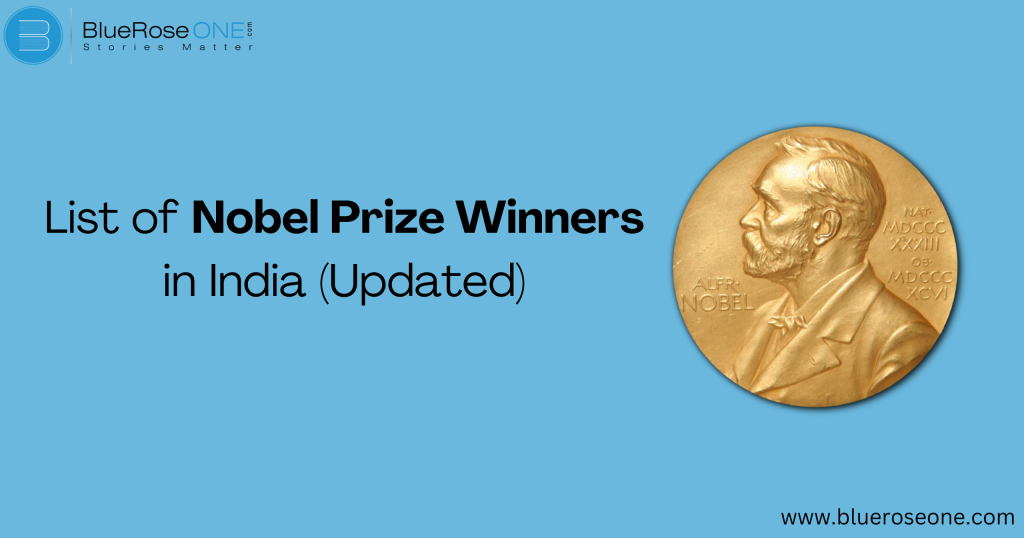
List of Nobel Prize Winners in India (Updated)
The Nobel Prize is one of the most prestigious international honors, granted each year to individuals and organizations who have made remarkable contributions to humanity. India has produced several Nobel laureates who have made outstanding contributions in a variety of domains. Let us look at the complete and updated list of Nobel Prize winners from India. What is the Nobel Prize? History and Significance The Nobel Prize was established by Alfred Nobel‘s will in 1895 to reward remarkable accomplishments in a variety of subjects. Since 1901, it has been given in fields such as physics, chemistry, medicine, literature, peace, and economic sciences. Categories of the Nobel Prize The Nobel Prize is awarded in the following six categories: Physics Chemistry Medicine Literature Peace Economic Sciences India’s Contribution to the Nobel Prize India has made substantial contributions to the Nobel Prize, with several Indian laureates being honored for their achievements in a variety of sectors. Rabindranath Tagore was the first Indian to receive the Nobel Prize in Literature in 1913, making him the first non-European recipient. In Physics, C.V. Raman won in 1930 for discovering the Raman Effect. Mother Teresa received the Nobel Peace Prize in 1979 for her humanitarian efforts. Other prominent winners are Amartya Sen (Economics, 1998), Kailash Satyarthi (Peace, 2014), and Abhijit Banerjee (Economics, 2019). These laureates represent India’s contributions to global knowledge, social service, and scientific progress. You may also like: How to Avoid Plagiarims in Assignments: 10 Easy Steps List of Nobel Prize Winners in India Here is the updated list of Nobel Prize winners from India: 1. Rabindranath Tagore (1913) – Literature Rabindranath Tagore became the first Indian and non-European to receive the Nobel Prize in Literature in 1913 for his collection of poems, Gitanjali. His poetic and deeply philosophical poetry, first penned in Bengali and then translated into English, captivated the globe with their spiritual depth and global subjects. Tagore’s achievements went beyond literature; he was a philosopher, painter, and composer, best known for penning India’s national anthem, Jana Gana Mana. Rabindranath Tagore – Nobel Prize Winner 2. C. V. Raman (1930) – Physics Sir Chandrasekhara Venkata Raman received the Nobel Prize in Physics in 1930 for his pioneering discovery of the Raman Effect, which explains how light scatters when it passes through a transparent medium. This discovery transformed spectroscopy and has important implications in physics and chemistry. Raman was the first Asian and non-white person to be awarded the Nobel Prize in Science. His findings paved the way for advances in quantum physics and molecular structure analysis. You may also like: How to Write a Book Description That Grabs Readers C.V Raman – Nobel Prize Winner 3. Har Gobind Khorana (1968) – Medicine Har Gobind Khorana, an Indian-American biochemist, received the Nobel Prize in Physiology or Medicine in 1968, alongside Marshall W. Nirenberg and Robert W. Holley, for their pioneering work on genetic codes and protein synthesis. Khorana’s research contributed to the understanding of how nucleotides in DNA determine amino acid sequences in proteins, which was a fundamental discovery in molecular biology. Born in Raipur, British India (now Pakistan), his work paved the way for modern genetic engineering and biotechnology. Har Gobind Khorana – Nobel Prize Winner 4. Mother Teresa (1979) – Peace Mother Teresa received the Nobel Peace Prize in 1979 for her humanitarian work with the Missionaries of Charity, which she founded in 1950. Born in Macedonia, she settled in India and dedicated her life to aiding the destitute, sick, and dying in Kolkata. The Nobel Committee acknowledged her efforts to eliminate poverty and distress, which posed a serious threat to peace. She graciously denied the formal banquet and requested that the cash be utilized to benefit the destitute. You may also read: Best Udemy Courses for Self-Published Authors Mother Teresa – Nobel Prize Winner 5. Subrahmanyan Chandrasekhar (1983) – Physics Subrahmanyan Chandrasekhar was awarded the Nobel Prize in Physics in 1983 for his breakthrough research into the structure and evolution of stars. His research contributed to the discovery of the Chandrasekhar Limit, which determines the maximum mass of a stable white dwarf star (about 1.4 times that of the Sun). This research was critical in understanding star evolution, particularly black hole development. Born in India, he later became a United States citizen and made substantial contributions to astrophysics throughout his career. Subrahmanyan Chandrasekhar – Nobel Prize Winner 6. Amartya Sen (1998) – Economic Sciences Amartya Sen received the Nobel Prize in Economic Sciences in 1998 for his contributions to welfare economics, including his work on poverty, social choice theory, and economic justice. His research stressed the importance of economic policies in eliminating inequality and increasing human potential. Sen’s seminal work on famine analysis demonstrated that food shortages are frequently caused by distribution difficulties rather than production limitations. His famous book, Development as Freedom, looks at economic development in terms of human well-being rather than GDP growth. You may also like: List of 10 Best Libraries in Patna for Bookworms Amartya Sen – Nobel Prize Winner 7. Venkatraman Ramakrishnan (2009) – Chemistry Venkatraman Ramakrishnan received the Nobel Prize in Chemistry in 2009 for his revolutionary discoveries into the structure and function of the ribosome. He was born in India and shared the prize with Thomas A. Steitz and Ada E. Yonath for their work utilizing X-ray crystallography to map ribosomal structures at the atomic level. His discoveries have substantially benefited molecular biology and medicine, particularly our understanding of how medicines target bacterial ribosomes. Ramakrishnan later served as President of the Royal Society (2015-2020). Venkatraman Ramakrishna – Nobel Prize Winner 8. Kailash Satyarthi (2014) – Peace Kailash Satyarthi, an Indian social reformer, received the Nobel Peace Prize in 2014 for his unwavering struggle against child labor and exploitation. He split the honor with Malala Yousafzai. Satyarthi established the Bachpan Bachao Andolan (Save Childhood Movement), which freed thousands of children from slavery and bonded labor. His initiatives have influenced global policies on child rights, and he continues to campaign for universal education and the abolition of child…
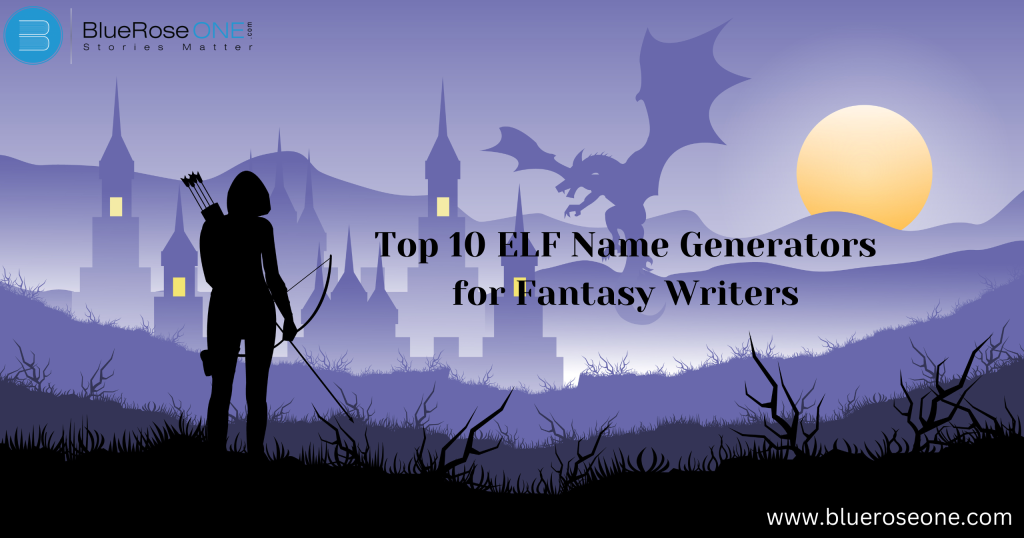
Top 10 ELF Name Generators for Fantasy Writers
Creating realistic and fascinating elf names is a difficulty for many fantasy authors. Whether you’re writing an epic novel, inventing a game, or creating characters for a role-playing session, having the right elven name helps to increase immersion. To make your job easier, we’ve compiled a list of the top 10 elf name generators that provide unique, lore-friendly names for your magical characters. You may also like: 10 Must-Read Kindle Unlimited Titles You Can’t Miss 1. Fantasy Name Generators Best for: Variety and Customization One of the most well-known tools, Fantasy Name Generators offers an extensive range of elf names inspired by various fantasy settings. You can choose from Tolkien-style elves, dark elves, high elves, and many more. Features: Thousands of pre-generated names Different elf subraces to choose from Easy to use Website: fantasynamegenerators.com 2. NameGenerator.biz Best for: Quick and Simple Elf Names If you need an instant elf name without complexity, NameGenerator.biz provides a simple and effective tool. Just click, and you’ll have a fresh name ready. Features: One-click generation No sign-up required Randomized name creation Website: namegenerator.biz You may also read: How to Avoid Plagiarism in Assignments: 10 Easy Steps 3. Donjon Fantasy Name Generator Best for: Tabletop RPG Players Donjon is a favorite among Dungeon Masters and fantasy writers. It offers customized elf names based on D&D lore and other fantasy universes. Features: D&D-specific elf names Fully randomized results Includes surnames and variations Website: donjon.bin.sh 4. Reedsy Character Name Generator Best for: Writers Seeking Unique Elf Names Reedsy’s generator provides names with meanings and origins, making it ideal for fantasy authors who want deeply thought-out names. Features: Categorized fantasy races Meaningful names with origins User-friendly interface Website: reedsy.com You may also like: How to Find a Book Title by Its Plot: A Step-by-Step Guide 5. Elf-Names.com Best for: Detailed Elvish Names This site specializes in elvish names, offering both first and last names that suit different fantasy settings. Features: Dedicated to elf names Generates full names Quick and effective Website: elf-names.c 6. Fantasy Name Generator by GeneratorMix Best for: Large Selection of Elf Names GeneratorMix’s fantasy name generator provides a diverse collection of random and lore-based elf names suitable for different fantasy worlds. Features: Customizable elf name settings Multiple results per search Free to use Website: generatormix.com You may also like: How to Write a Book Description That Grabs Readers 7. Chaotic Shiny Name Generator Best for: Unique and Unexpected Names Chaotic Shiny is a great tool for writers who need unusual and creative elf names. It’s perfect for non-traditional fantasy settings. Features: Unique and imaginative names Fantasy-race specific options Free to use Website: chaoticshiny.com 8. Behind the Name Fantasy Name Generator Best for: Authentic and Historical-Sounding Names Behind the Name provides authentic and linguistically accurate elf names, making it perfect for high-fantasy settings. Features: Meaningful name origins Variety of fantasy races Easy navigation Website: behindthename.com You may also read: Best Udemy Courses for Self-Published Authors 9. Seventh Sanctum Elf Name Generator Best for: Fun and Experimental Names Seventh Sanctum’s generator provides quirky and unexpected elf names, great for lighthearted fantasy or comedic settings. Features: Unique combinations Different fantasy subcategories Fun and easy to use Website: seventhsanctum.com 10. LitRPG Adventures Name Generator Best for: AI-Powered Custom Names LitRPG Adventures uses AI to generate detailed and lore-friendly elf names based on RPG settings. Features: AI-enhanced name generation RPG-specific names Subscription-based model Website: litrpgadventures.com Conclusion Finding the proper elf name can improve your fantasy writing, role-playing, and game production skills. Whether you like conventional Tolkien-esque names or something wholly new, these ten generators cater to every creative urge. Try them out to find which one best fits your world-building needs! Frequently Asked Questions 1. What is the best free elf name generator? Most of the generators listed, like Fantasy Name Generators and Donjon, are free and provide excellent results. 2. Can I use these names in my book or game? Yes! Most generated names are free to use commercially, but always check the terms of the specific website. 3. Are these names suitable for Dungeons & Dragons? Yes! Several generators, like Donjon and LitRPG Adventures, are tailored for tabletop RPGs. 4. What makes a good elf name? A good elf name should have a mystical, elegant, and nature-inspired sound, often with soft syllables and lyrical tones. 5. Can I modify the generated names? Absolutely! Use these generators as inspiration and tweak the names to fit your world-building vision.
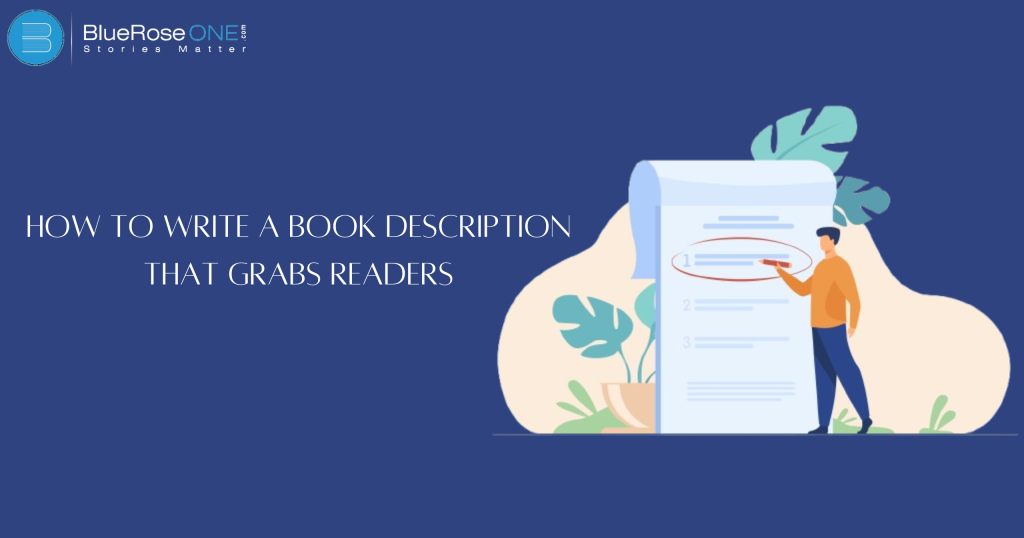
How to Write a Book Description That Grabs Readers
An excellent book description is similar to a movie trailer: it should attract, engage, and leave the reader wanting more. Whether you’re publishing traditionally or self-publishing, your book description is critical in enticing readers to click the “Buy Now” button. In this article, we’ll help you through the process of creating a book description that sells. Understanding the Purpose of a Book Description Your book description isn’t just a summary—it’s a marketing tool. It’s one of the first things potential readers see when they come across your book. A strong description: Captures interest within seconds Helps readers determine if the book is for them Encourages impulse purchases You may also like: How to Avoid Plagiarism in Assignment: 10 Easy Steps Key Elements of a Great Book Description 1. A Captivating Hook A strong book description begins with a gripping hook that captures the reader’s attention right away. This is usually the opening sentence or two, and it should arouse interest, emotion, or intrigue. A well-crafted hook gives readers a reason to continue reading and establishes the tone of the work. A mystery novel, for example, may begin with a compelling query, or a romance novel may hint at an intriguing love tale. A strong hook entices readers to learn more. 2. A Concise Summary Without Spoilers A solid book description gives readers a concise overview of the tale without revealing too much. It establishes the main character, the key conflict, and the book’s overall tone. The idea is to pique readers’ interest and make them want to know more. Avoid large plot twists and endings—leave some mystery. Instead, concentrate on what sets the book apart and why it’s worth reading. A well-written summary is concise, interesting, and spoiler-free. 3. The Genre and Tone Clarity A good book description effectively communicates the genre and tone, so readers know what to expect. Whether it’s a thrilling mystery, a touching romance, or an epic fantasy, mentioning the genre reaches the correct audience. The tone should also correspond to the book’s style—light and amusing for a comedy, dark and suspenseful for a thriller. Setting appropriate expectations increases the likelihood that readers who enjoy that type of book will pick it up. 4. Highlighting the Main Conflict or Theme A compelling book description emphasizes the primary conflict or theme in order to pique readers’ interest early. This entails clearly portraying the core conflict, mystery, or idea that drives the narrative. In fiction, emphasize the protagonist’s challenge or the stakes involved. In nonfiction, underline the main issue or problem that the book addresses. Keeping it concise but exciting helps readers understand what to expect and motivates them to dig more, boosting the likelihood of a purchase. 5. A Call to Action (CTA) That Converts A powerful call to action (CTA) motivates readers to take the next step, such as purchasing the book, reading a sample, or adding it to their wishlist. Create urgency by using clear, appealing language such as “Get your copy today!” or “Start your adventure now!” A well-placed CTA encourages readers to act on their curiosity, which boosts sales and engagement. To have the greatest impact, keep it clear, direct, and compelling. You may also read: 5 Affordable Tools for Easy Book Formatting and Design Step-by-Step Guide to Writing a Compelling Book Description Step 1: Identify Your Target Audience Before you write your book description, you should establish who your ideal readers are. Consider your age, interests, and favored book genres. Understanding your target allows you to utilize the appropriate tone and accentuate things that they find appealing. For example, the description of a mystery novel should highlight suspense, but a romance novel should emphasize emotions. When you adapt your description to the correct readers, you raise your chances of capturing their attention and driving sales. Step 2: Start with an Engaging Hook The opening few sentences of your book description are critical since they affect whether a reader continues reading or skips forward. Begin with an appealing hook that quickly draws attention. This could be a thought-provoking question, a bold remark, or a fascinating scenario that establishes the tone for your book. A powerful hook piques readers’ interest and motivates them to read further. To optimize its impact, keep it concise, engaging, and pertinent to the idea of your work. Step 3: Summarize the Story or Key Concept In this step, summarize your book’s core premise briefly and without giving too much away. To build intrigue in fiction, focus on the core conflict, main character, and setting. For nonfiction, concentrate on the fundamental problem your book answers or the primary benefit to readers. Keep it basic and entertaining, utilizing language that piques interest. A well-written summary allows potential readers to instantly understand why your book is worth reading. Step 4: Showcase What Makes Your Book Unique Readers have a plethora of books to select from, so emphasizing what distinguishes yours is essential. Concentrate on distinguishing features such as a creative plot twist, a new perspective, or an engaging main character. Mention whether your book crosses genres or addresses a current topic. This allows readers to easily understand why your book is worth their attention. Maintain clarity and engagement to ensure that they are eager to learn more about your narrative. Step 5: Keep It Concise and Readable A superb book description is brief, straightforward, and easy to read. Readers generally skim descriptions, so keep sentences basic and paragraphs short. Aim for 150-200 words, highlighting the most intriguing features of the book. Avoid superfluous details and lengthy explanations. To pique people’s interest, use powerful, compelling language. A well-structured description with short phrases and adequate space allows customers to digest information fast and decide to purchase your book. Step 6: End with a Strong Call to Action A great book description should conclude with a strong call to action (CTA) that motivates readers to take the next step. To build urgency, use appealing language such as “Get your copy today!” or “Start your adventure right…
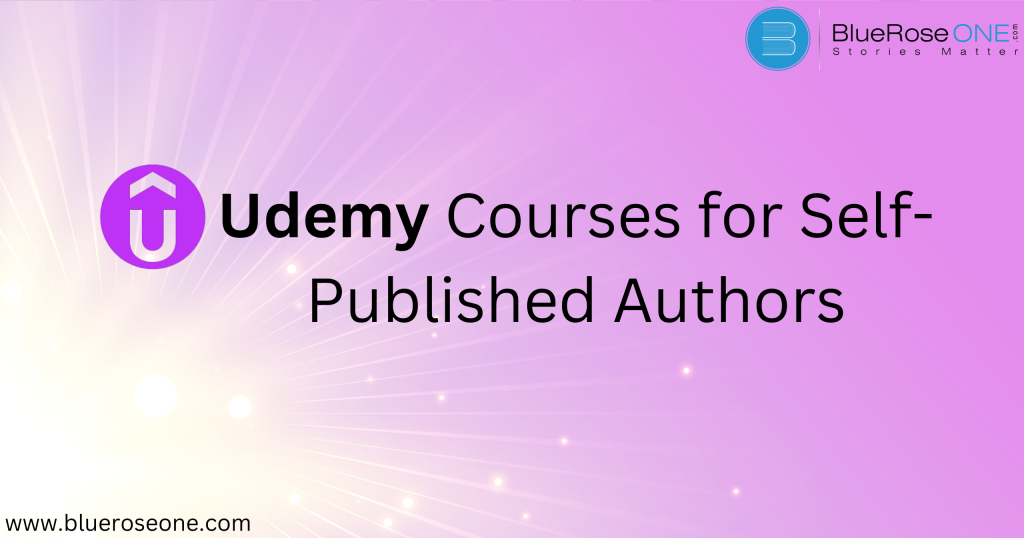
Best Udemy Courses for Self-Published Authors
The journey of self-publishing can be overwhelming. From writing and editing to marketing and book formatting, there’s a lot to learn. Thankfully, Udemy offers affordable and comprehensive courses tailored for self-published authors. In this article, we’ll explore the best Udemy courses to help you succeed in every aspect of self-publishing. Best Udemy Courses for Self-Published Authors 1. Bestseller Book Marketing: Amazon KDP Self-Publishing “Bestseller Book Marketing: Amazon KDP Self-Publishing” is a top-rated Udemy course that teaches authors how to become Amazon bestseller authors in 2025 and generate significant cash from their works. This course covers techniques and insights into efficient book marketing, with a focus on Amazon’s Kindle Direct Publishing (KDP) platform. By mastering these tactics, self-published authors can improve their book’s visibility and sales success on Amazon. This course is an excellent resource for authors who want to negotiate the competitive world of self-publishing and attain blockbuster status. Rating: Benefits of the course: Gain insights into proven marketing strategies that have helped sell over 10,000 books. Learn to self-publish both paperback and Kindle (KDP) books efficiently. Master techniques to make books visible and appealing, even in competitive niches. Improve personal branding and establish authority as a thought leader in your niche. Receive personalized support from the instructor, including opportunities to join office hours for direct assistance. Check this out on Udemy You may also like: How to Avoid Plagiarism in Assignments: 10 Easy Steps 2. SELF PUBLISHING – Outside the Box “SELF PUBLISHING – Outside the Box” is a highly rated Udemy course designed to guide aspiring authors through the self-publishing process. The course covers essential topics such as understanding the motivations behind writing, developing compelling topics or storylines, and making decisions about page and book sizes, as well as the use of images. Rating: Benefits of the course: Comprehensive Content: The course offers a thorough overview of the self-publishing journey, from conceptualizing ideas to finalizing the book’s design. Expert Guidance: Led by experienced instructors, learners receive valuable insights into the nuances of self-publishing. Flexible Learning: With 36 minutes of content spread across 10 lectures, the course is structured to accommodate various learning paces. High Student Satisfaction: The course boasts a 4.6 out of 5 rating, reflecting positive feedback from participants. Global Reach: Having enrolled students from 49 countries and offering content in 16 languages, the course is accessible to a diverse audience. Check this out on Udemy 3. Write & Publish Your First Nonfiction Book on the Side “Write & Publish Your First Nonfiction Book on the Side” is a brief Udemy course that teaches busy professionals how to write and self-publish a nonfiction Kindle bestseller while working full-time. It lasts about 1.5 hours and provides concrete insights into topic selection, efficient writing tactics, and successful self-publishing on Amazon KDP. Rating: Benefits of the course: Topic Selection: Learn to identify nonfiction subjects that resonate with readers. Time Management: Discover techniques to focus on essential tasks, enabling book completion despite a busy schedule. Self-Publishing Guidance: Gain step-by-step instructions on publishing your book on Amazon KDP. Bestseller Strategies: Uncover simple tricks to position your book as a bestseller and establish authority in your field. Financial Insights: Understand potential earnings from writing and self-publishing a book. Check this out on Udemy You may also like: List of 10 Best Libraries in Patna for Bookworms 4. Create and self publish a children’s picture book for FREE This Udemy course is perfect for aspiring children’s book authors looking to publish without upfront costs. It covers everything from story development to illustration and formatting using free tools. The course also guides students through the self-publishing process on platforms like Amazon KDP. Rating: Benefits of the course: Learn to create a picture book without any investment. Gain hands-on experience with free design and publishing tools. Step-by-step guidance on formatting and uploading your book. Ideal for beginners with no prior experience. Helps authors establish themselves in the children’s book market. Check this out on Udemy 5. Book Marketing: Amazon Series Landing Page and Custom Domain “Book Marketing: Amazon Series Landing Page and Custom Domain” is an Udemy course that teaches authors how to effectively sell their books without the need for a personal website or blog. The course teaches participants how to optimize Amazon book product pages and series descriptions, which increases book visibility and sales. Rating: Benefits of the course: Learn to create optimized Amazon book product pages and series descriptions to boost book visibility and sales. Understand how to set up a custom domain for your Amazon series landing page, providing a professional touch to your marketing efforts. Gain insights into effective book marketing strategies without the need for an author website or blog. Access a practical, step-by-step approach to creating a series landing page, simplifying the marketing process for self-published authors. Check this out on Udemy You may also like: 5 Affordable Tools for Easy Book Formatting and Design 6. The Foundations of Fiction (Writing Mastery) “Write a Bestselling Novel in 15 Steps (Writing Mastery)” is a comprehensive Udemy course that walks prospective authors through the key ingredients of creating a successful novel. Jessica Brody, a certified Save the Cat! plotting method instructor, teaches the course, which looks into 15 key story beats inherent in all great stories and provides a clear roadmap from inception to conclusion.Students will learn how to plot a whole novel, analyze what makes novels successful, and create a compelling outline. Rating: Benefits of the course: Develop complex, realistic characters that resonate with readers. Craft vibrant dialogue to bring scenes to life. Construct vivid settings that shape the world of your story. Compose intricate prose that captivates readers from the first word. Structure gripping plots that keep readers engaged and turning pages. Check this out on Udemy 7. Write a Bestselling Novel in 15 Steps (Writing Mastery) “Write a Bestselling Novel in 15 Steps (Writing Mastery)” is a comprehensive Udemy course that walks prospective authors through the key ingredients of creating a successful novel. Jessica Brody, a certified Save the…
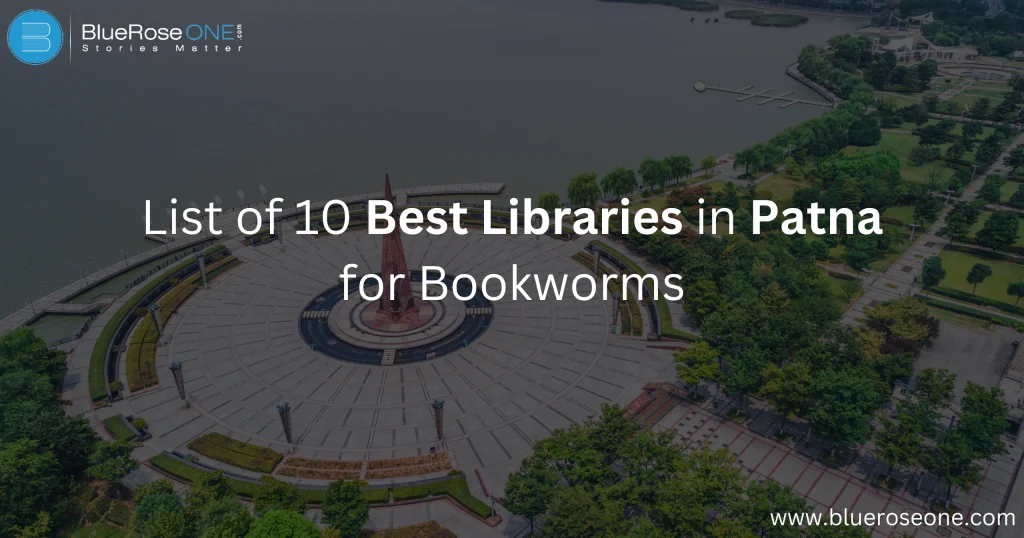
List of 10 Best Libraries in Patna for Bookworms
Patna, the capital of Bihar, is not just a city of rich history and culture but also a paradise for book lovers. Whether you are a student, researcher, or an avid reader, the city offers a variety of libraries filled with knowledge and resources. If you are looking for a quiet place to read and explore books, here’s a list of the 10 best libraries in Patna that you must visit. 10 Best Libraries in Patna 1. Khuda Bakhsh Oriental Public Library The Khuda Bakhsh Oriental Public Library, situated along the banks of the Ganges in Patna, Bihar, is a repository of rare Islamic manuscripts and books. Established in 1891 by Khan Bahadur Khuda Bakhsh, it began with 4,000 manuscripts, including 1,400 inherited from his father. Today, the library houses over 21,000 manuscripts and 250,000 printed books in various languages. Renowned for its collection of Persian and Arabic manuscripts, it also features paintings from the Mughal and Rajput eras. Recognized as an institution of national importance, the library continues to attract scholars worldwide. Special Collections: Persian, Arabic, Urdu, and English books Membership: Free access for all, but registration is required for borrowing books 2. Sinha Library The Sinha Library is a well-known public library in Patna, India, that was founded in 1924 by Dr. Sachchidananda Sinha. It has an extensive collection of about 180,000 books, including historical papers and rare manuscripts. Among the notable objects are books by Jawaharlal Nehru, Buddhist suttas, copies of the Quran, the Sacred Books of the East, and a copy of the original Indian Constitution. Historical newspapers including Mahatma Gandhi’s “Harijan,” “Indian People,” “Bihari Times,” “Criterion Searchlight,” “Leader,” and “Aryavarta” are also preserved by the library. The Sinha Library is still an essential resource for academics and book lovers alike, and it is open to anyone who truly needs it. Best For: Research scholars, law students Membership: Available for students and professionals You may also like: 5 Affordable Tools for Easy Book Formatting and Design 3. Impact Library Impact Library, located in Patna’s Kankarbagh area, is a premier self-study center offering a serene environment for students. Amenities include private seating, book rental and purchase services, stationery supplies, and 100% power backup, ensuring an uninterrupted study experience. Situated at Ram Govind Singh Path, Chandmari Road, near Kishor Kunal Park, the library has garnered positive feedback, boasting a 4.8-star rating based on 71 reviews. 4. Anand Library Anand Library, located on the first floor of Dev Pushp Villa near the petrol pump on E Boring Canal Road in Anandpuri, Patna, operates 24/7, offering a conducive environment for self-study. It provides amenities such as purified drinking water, Wi-Fi, air-conditioned rooms, and sufficient lighting, enhancing the study experience. The library has received positive feedback for its peaceful ambiance, making it an ideal spot for students preparing for competitive exams. You may also like: Audible Titles vs. Pyshical Books: Which One is Better for you? 5. Bihar Legislative Council Library Patna University Library, established in 1919, is housed in a spacious three-storied building inaugurated in 1958. It boasts a vast collection of approximately 2.76 lakh books, 15,000 journals, over 25,000 PhD theses, and 5,763 rare manuscripts, some dating back to the 14th century. The library is undergoing automation to enhance accessibility, with 30,000 books digitized and 18,000 barcoded. Additionally, it offers anti-plagiarism checks for research scholars and is integrating with the National Digital Library to provide extensive e-resources. Best For: University students and faculty Resources: Digital and print collections 6. Patna University Library Patna University Library, established in 1919, is housed in a spacious three-storied building inaugurated in 1958. It boasts a vast collection of approximately 2.76 lakh books, 15,000 journals, over 25,000 PhD theses, and 5,763 rare manuscripts, some dating back to the 14th century. The library is undergoing automation to enhance accessibility, with 30,000 books digitized and 18,000 barcoded. Additionally, it offers anti-plagiarism checks for research scholars and is integrating with the National Digital Library to provide extensive e-resources. Best For: University students and faculty Resources: Digital and print collections You may also like: 10 Must-Read Kindle Unlimited Titles You Can’t Miss 7. A. N. Sinha Institute Library The A. N. Sinha Institute Library, founded in 1958, is the premier collection of social sciences literature in eastern India. It is housed in a dedicated three-story structure and has about 33,000 books as well as approximately 32,888 bound volumes of periodicals and reports. The library subscribes to 120 Indian and foreign journals and has a one-of-a-kind “JP Collection” consisting of over 3,000 volumes donated by Lok Nayak Jayaprakash Narayan. International bodies including UNCTAD and UNESCO have designated it as a depository. Since 1911, it has also published a quarterly bulletin called “Bihar in Print,” which covers literature on Bihar and Jharkhand. Access: Open for scholars and students with proper authorization 8. Indian Institute of Technology (IIT) Patna Library The Central Library of the Indian Institute of Technology (IIT) Patna is a sophisticated facility that meets the academic demands of its community. The library, which opened in December 2008 with about 1,000 books and one online resource, has since grown to include over 14,000 books and 39 online resources, including e-books and e-journals. It uses innovative automation systems with self-check-in and check-out capabilities, allowing members to issue and return books at any time. The library provides a tranquil setting for learning and research. Best For: Science and technology enthusiasts You may also read: 10 Best Audible Titles You Should Listen To Right Now 9. Sri Krishna Science Centre Library The Shrikrishna Science Centre in Patna, founded in 1978, is Bihar’s foremost science museum, named after Dr. Shrikrishna Singh, the state’s first chief minister. It is a unit of the National Council of Science Museums, which is part of the Ministry of Culture in India. It provides interactive exhibits that make science accessible and interesting to visitors of all ages. The center’s galleries include the Fun Science Gallery, the Mirrors and Images Gallery, and the Evolution Gallery, all of which are meant to give…
